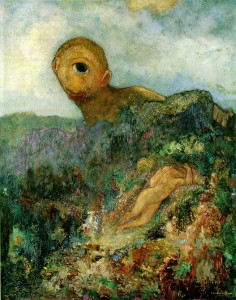 This is another review of a long-extant book (originally published in 1899), but a new digitization of this hard-to-find work over at Archive.org made a good case for this. The Symbolist Movement in Literature, by the English sometime poet and critic Arthur Symons, has not been made available via Project Gutenberg, though many of his other works have, but Archive.org has made up the difference.
This is another review of a long-extant book (originally published in 1899), but a new digitization of this hard-to-find work over at Archive.org made a good case for this. The Symbolist Movement in Literature, by the English sometime poet and critic Arthur Symons, has not been made available via Project Gutenberg, though many of his other works have, but Archive.org has made up the difference.
For such a supposedly vague, cryptic movement as Symbolism, Symons pins down exactly what was going on “in this revolt against exteriority, against rhetoric, against a materialistic tradition; in this endeavour to disengage the ultimate essence, the soul, of whatever exists and can be realized by the consciousness; in this dutiful waiting upon every symbol by which the soul of things can be made visible.” And to clarify the original title, Symons covers only the French Symbolist movement in literature, but does this supremely well, taking in 16 writers in his main chapter heads, from Balzac to Maeterlinck, and touching on many others besides.
It helps to have been there. Edmund Wilson may have retreaded some of the same subjects and themes in Axel’s Castle, some 30 years later, but Symons actually knew many of the writers he chronicles personally, and can tell you from first-hand experience how Stéphane Mallarmé, displaced from his favourite chair, roamed round the room “like a cat that has been turned out of its favourite corner,” or how Joris-Karl Huysmans rolled a cigarette “between his thin, expressive fingers.” Yet he writes with quite enough perspective and critical insight to situate his near-contemporaries in their proper sequence and relation to each other. He writes about literary style and a writer’s aesthetic extremely well, in the process clarifying the aims and techniques of some very recondite writers, even in the original French. (Symons was totally at ease in French, and it shows in his unforced assessments of writers’ work from across the entire 19th century and even before.)
Symons also manages some very effectively acid criticism of the last writers you’d expect to see him cover, such as Émile Zola – “just as Zola’s vision is the vision of the average man, so his vocabulary, with all its technicology, remains mediocre, incapable of expressing subtleties, incapable of a really artistic effect”- or Victor Hugo – “‘a fellow with the most beautiful figures of speech at his disposal,’ who did not take the trouble to think.” Sometimes he is too partial and too much the man of his time – as in his moralistic eulogies of Verlaine, describing the debauches of this exquisitely gifted but weak and pathetically corrupted nature as “love desiring the absolute, seeking in vain, seeking always, and, finally, out of the depths, finding God.” You can taste the late Victorian in those moralizing tendencies, which a French critic would likely not have bothered with, but they are one of Symons’s few limitations.
With its deficiencies, which are very few, this remains one of the best introductions to French Symbolism, and to the entire Symbolist aesthetic and worldview, in English. It’s also a constantly stimulating appraisal of some very great writers, even putting aside its agenda. This is what free internet content ought to be about.


































